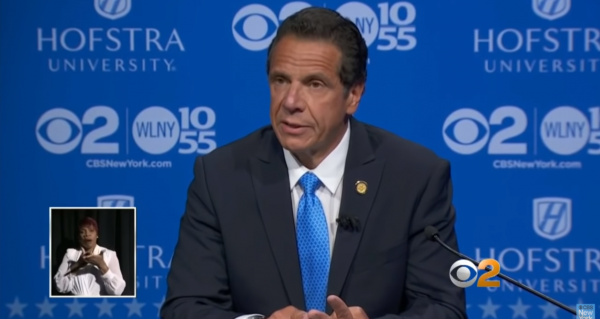
A stinging Op-Ed at The Hill recently put New York Gov. Andrew Cuomo on notice that just because he appears to be taking some kind of action to combat the current spike in Empire State mayhem, it doesn’t mean he’ll get away with something that is “purely illusory.”
The piece—authored by Jonathan Turley, the Shapiro Professor of Public Interest Law at George Washington University—details how Cuomo’s plan may be something of a non-starter because it ostensibly allows people to sue gun manufacturers, and get around a federal law that prohibits such lawsuits.
“Not only does that law face serious constitutional challenges,” Turley writes, “but similar lawsuits brought on similar grounds have failed miserably in the courts.”
The Protection of Lawful Commerce in Arms Act (PLCAA) was adopted during the George W. Bush administration in order to stop a series of harassment (“junk”) lawsuits that had been filed essentially to bankrupt the gun industry through litigation.
The National Rifle Association may have Cuomo’s strategy pegged for what it truly is, a feint designed to convince voters he’s doing something about reducing crime when that is not really the case.
“Rather than tackle the Empire State’s violent crime problem head on, the governor decided to throw red meat to the New York Democratic base in the form of further gun control,” NRA said in a statement.
Monday, Joe Biden met with New York City mayoral candidate Eric Adams, a former New York police captain and currently the Brooklyn borough president. Adams reportedly told ABC’s George Stephanopoulos, “We feed crime in America and in New York. We need to stop the feeders of crime. And then we must have an immediate response. We should create something like a JTTF — Joint Terrorism Task Force. This is what we did to fight terrorism.”
But Adams also explained to CNN’s Jake Tapper that Democrats are misguided when they make gun laws at the federal level a priority, MSN reported. Instead of banning so-called “assault rifles” Adams reportedly suggested the Congress should focus on crimes committed with handguns.
Therein may be another problem for the gun prohibition crowd, however, because handguns were specifically mentioned in the 2008 Heller ruling by the U.S. Supreme Court as being constitutionally protected.
Returning to Turley’s Op-Ed, he suggested Cuomo’s effort may be all politics.
“But politics is about perception so ‘doing something is better than nothing,’ even when nothing will likely be achieved,” Turley wrote.
And so far as the new law that purportedly will allow lawsuits against the gun industry, Turley suggested it “will be as productive as trying to win the New York Marathon by running furiously in place.”
In the final analysis, Cuomo appears to be facing a dilemma he doesn’t care for, because—as the NRA article contended—the governor “appears to have calculated that reining in New York violence with the necessary tough-on-violent crime approach is politically unpalatable. Rather than tackle the Empire State’s violent crime problem head on, the governor decided to throw red meat to the New York Democratic base in the form of further gun control.”